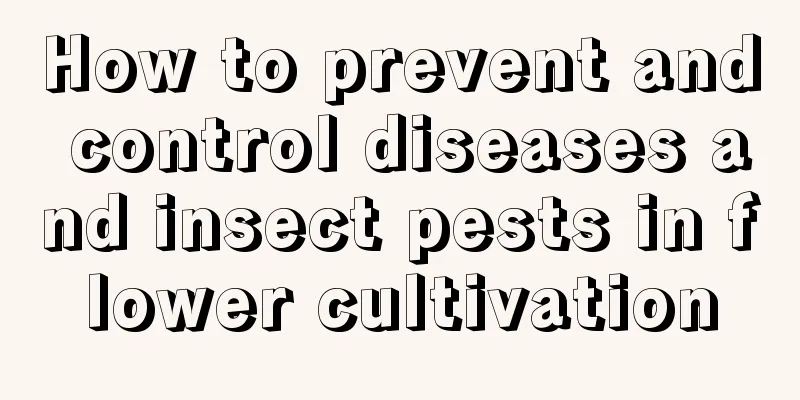How to prevent and control diseases and insect pests in flower cultivation

powdery mildew:A layer of white powder appears on the back or both sides of the leaves Botrytis cinerea:Gray mold can be seen on plants under humid conditions anthrax:The leaves have nearly circular spots that are light brown or grayish white in the middle and purple-brown or dark brown at the edges. The lesions can expand, and in the later stage there will be small black spots on the lesions. Round or nearly round light brown spots may also appear on the stems, and the lesions are mostly sunken. Damping-off disease:When the seedlings have become lignified to a certain extent, they are infected with the pathogen and will die upright. Scale insects:The leaves turn yellow and the branches wither, which often induces sooty mold disease. Red spider:The leaves lose their green color, showing dense and small gray-yellow spots or patches, or the leaves curl and shrink. In severe cases, the entire leaves become scorched and yellow as if burned by fire, and fall off. aphid:It causes the leaves to curl, shrink, and become deformed, slows the development of flowers, or even causes them to wither and die, and can also induce sooty mold disease. Leafhoppers:The leaves will have pale white spots. When the damage is serious, the spots will appear in patches, or the epidermis will be pierced, causing the branches to wither. Moths:The leaves or shoots are incomplete. Here are some pollution-free pest control methods:Plant ash potting method:Regularly spreading wood ash on the surface of the pot can significantly reduce the incidence of gray mold in flowers such as tulips and cyclamen. It can also increase the flowers' absorption rate of potassium fertilizer, making the branches thick and the flowers colorful. Vinegar wiping method:Use 50 ml of vinegar, soak a cotton ball in the vinegar, and gently wipe it on the flower stems and leaves. This can not only kill scale insects, but also make the leaves that have been damaged by scale insects return to green and shine again. Alcohol rubbing method:Gently and repeatedly wipe the leaves infected with scale insects with 75% alcohol to completely kill the larvae that are invisible to the naked eye. Baking soda spraying method: Spray the affected plants with a 0.1% baking soda solution, and the powdery mildew prevention and control rate for flowers such as roses, chrysanthemums, impatiens, and cineraria can reach more than 80%. |
<<: What to do if Clematis is infected with white rot
>>: What to do if the flower is sick
Recommend
What to do if the leaves of Mirabilis jalapa wilt
1. Moisture problem Cause: Regarding moisture, th...
Purple cabbage planting time and method
Purple cabbage planting time Purple cabbage is ge...
How to care for straw chrysanthemum
Straw daisy growing conditions Straw daisy prefer...
What flowers are suitable for growing in Ordos? What are the city flowers and trees?
1. Climate characteristics of Ordos Ordos belongs...
Diseases and prevention methods of peony
Peony Diseases : Leaf Mold Leaf mold is a common ...
Can spring orchids bloom in winter?
Normal flowering period The normal flowering peri...
How to divide the pots of Jade Fan Succulent Plants so that they can survive easily
When is the best time to divide the Jade Fan Succ...
Can the star anise tree be planted in the yard?
Can I plant anise trees in my yard? Star anise tr...
Can variegated trachelospermum be cultivated in water? How to cultivate variegated trachelospermum in water?
Can variegated trachelospermum be hydroponically ...
The best time to transplant peonies
1. Best time The best time to transplant peonies ...
Where do cauliflower seeds come from?
Where do cauliflower seeds come from? Cauliflower...
When to plant ginseng
1. Planting time There are not many requirements ...
What are the breeding methods and precautions for spiral iron
Spiral Iron Introduction Spiral iron belongs to t...
Bean sprout planting time and method planting process and precautions
Bean sprout planting time Bean sprouts can be cul...
How to keep water bamboo from dying in winter
1. Keep warm Water bamboo is afraid of frost. If ...









